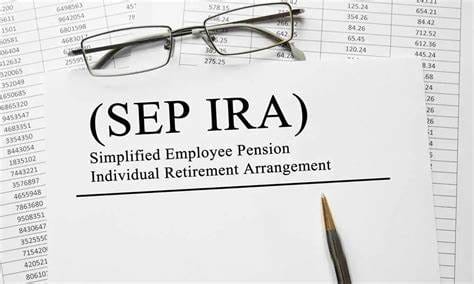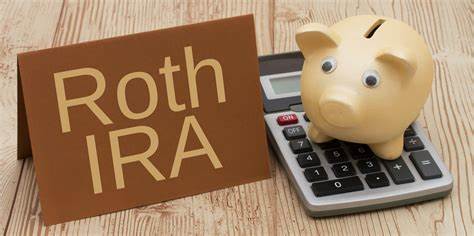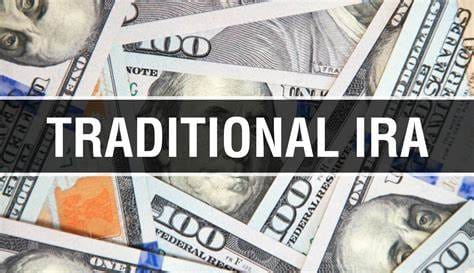Maximize Your Retirement Savings with a Simple, Tax-Friendly Solution
If you’re a freelancer, self-employed professional, or small business owner, saving for retirement can feel complicated. That’s where a SEP IRA (Simplified Employee Pension Individual Retirement Account) comes in—it’s an easy-to-manage, tax-advantaged way to invest in your future.
In this guide, we’ll explain what a SEP IRA is, how it works, who qualifies, and why it might be the perfect fit for your retirement savings strategy.
What Is a SEP IRA?
A SEP IRA is a retirement plan designed for self-employed individuals and small business owners. It allows employers to make tax-deductible contributions to their own retirement accounts and those of their employees.
Unlike traditional IRAs, only the employer contributes to a SEP IRA—not the employee. Contributions are tax-deductible and grow tax-deferred until withdrawal.
Key Features
✅ High Contribution Limits
One of the biggest advantages of is the higher contribution limit compared to Traditional or Roth IRAs.
For 2024, you can contribute the lesser of:
- 25% of compensation, or
- $69,000 (up from $66,000 in 2023)
✅ Tax Deductible Contributions
Employer contributions are 100% tax-deductible as a business expense.
✅ Easy Setup and Low Costs
SEP IRAs are easy to establish, with minimal paperwork and no annual filing requirements for the employer.
✅ Flexible Contributions
You aren’t locked into contributing every year. You can adjust your contributions based on your business’s performance.
Who Is Eligible?
A SEP IRA is ideal for:
- Sole proprietors
- Freelancers
- Contractors
- Partnerships
- Small business owners with few or no employees
Employee Eligibility Requirements (as set by the IRS):
- Age 21 or older
- Worked for the employer in at least 3 of the last 5 years
- Earned at least $750 in compensation in the current year (2024 threshold)
💡 Important: If you contribute to your own SEP IRA, you must also contribute the same percentage of salary to each eligible employee’s SEP IRA.
SEP IRA vs. Traditional IRA: Key Differences
| Feature | SEP IRA | Traditional IRA |
|---|---|---|
| Contribution Limit (2024) | Up to $69,000 | $7,000 (or $8,000 if 50+) |
| Who Contributes | Employer only | Individual only |
| Paperwork | Minimal | Minimal |
| Best For | Business owners/self-employed | Anyone with earned income |
How to Open a SEP IRA
1. Choose a Financial Institution
Most brokerages—such as Vanguard, Fidelity, Schwab, or online platforms like Betterment—offer SEP IRAs.
2. Fill Out IRS Form 5305-SEP
This form establishes your SEP plan. Your brokerage may help with this process.
3. Set Up Individual SEP IRA Accounts
Create a separate SEP IRA for yourself and each eligible employee.
4. Make Contributions
Decide how much to contribute each year (up to the legal limit) and submit funds to the account(s).
Tax Benefits
- Tax-deferred growth: Your money grows without being taxed until you make withdrawals.
- Deductible contributions: Contributions reduce your taxable business income, lowering your overall tax bill.
- No annual filing requirements: Unlike 401(k)s, there are no IRS filing obligations for SEP IRAs.
Rules for Withdrawals
- You can begin penalty-free withdrawals at age 59½
- Early withdrawals (before 59½) may be subject to a 10% penalty + income tax
- There are Required Minimum Distributions (RMDs) starting at age 73
Pros and Cons of SEP IRAs
✅ Pros:
- High contribution limits
- Simple to set up and maintain
- Ideal for fluctuating income
- Tax-deductible contributions
- Great for solopreneurs and small businesses
⚠️ Cons:
- Must contribute the same percentage for all eligible employees
- No Roth (after-tax) option
- No catch-up contributions for those 50 and older
Is a SEP IRA Right for You?
Consider a SEP IRA if you:
- Are self-employed or own a small business
- Want to make larger retirement contributions than a traditional IRA allows
- Need a flexible, tax-advantaged plan with minimal admin requirements
- Have no (or few) employees
If you have multiple employees and want more control over who receives benefits, you might explore other retirement plans like a Solo 401(k) or a SIMPLE IRA.
Final Thoughts
A SEP IRA is one of the easiest and most efficient ways for self-employed individuals and small business owners to save for retirement. With generous contribution limits, tax benefits, and minimal paperwork, it’s a smart choice for long-term financial growth.
Start today by setting up a SEP IRA with your preferred financial institution and take the first step toward a more secure financial future.







